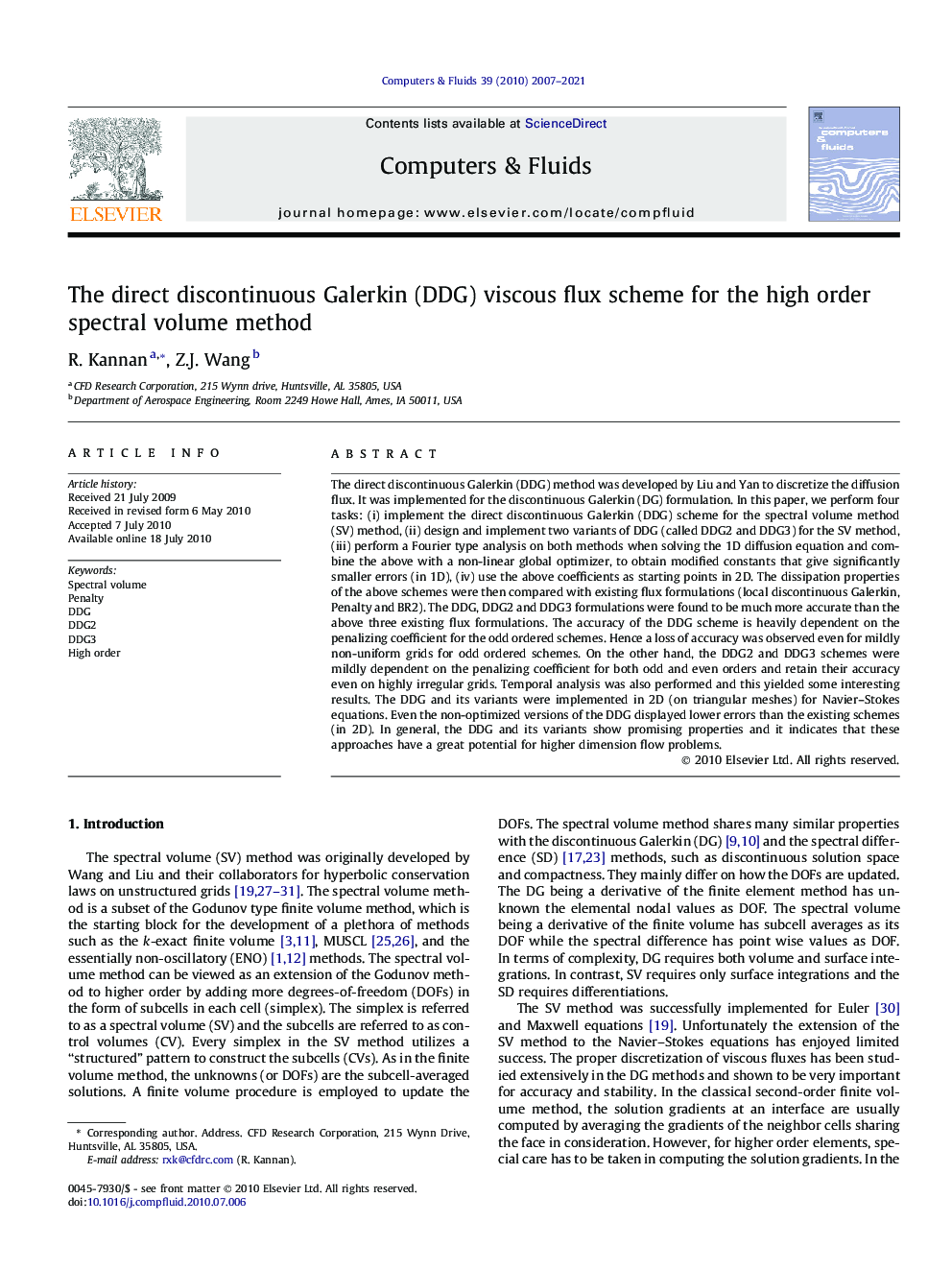| Article ID | Journal | Published Year | Pages | File Type |
|---|---|---|---|---|
| 762719 | Computers & Fluids | 2007 | 15 Pages |
The direct discontinuous Galerkin (DDG) method was developed by Liu and Yan to discretize the diffusion flux. It was implemented for the discontinuous Galerkin (DG) formulation. In this paper, we perform four tasks: (i) implement the direct discontinuous Galerkin (DDG) scheme for the spectral volume method (SV) method, (ii) design and implement two variants of DDG (called DDG2 and DDG3) for the SV method, (iii) perform a Fourier type analysis on both methods when solving the 1D diffusion equation and combine the above with a non-linear global optimizer, to obtain modified constants that give significantly smaller errors (in 1D), (iv) use the above coefficients as starting points in 2D. The dissipation properties of the above schemes were then compared with existing flux formulations (local discontinuous Galerkin, Penalty and BR2). The DDG, DDG2 and DDG3 formulations were found to be much more accurate than the above three existing flux formulations. The accuracy of the DDG scheme is heavily dependent on the penalizing coefficient for the odd ordered schemes. Hence a loss of accuracy was observed even for mildly non-uniform grids for odd ordered schemes. On the other hand, the DDG2 and DDG3 schemes were mildly dependent on the penalizing coefficient for both odd and even orders and retain their accuracy even on highly irregular grids. Temporal analysis was also performed and this yielded some interesting results. The DDG and its variants were implemented in 2D (on triangular meshes) for Navier–Stokes equations. Even the non-optimized versions of the DDG displayed lower errors than the existing schemes (in 2D). In general, the DDG and its variants show promising properties and it indicates that these approaches have a great potential for higher dimension flow problems.
